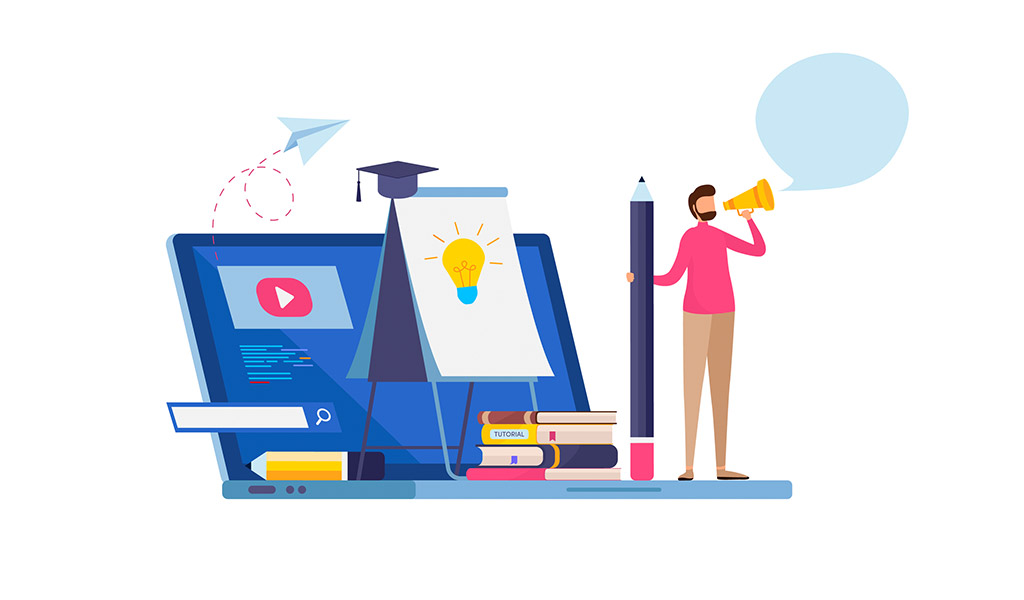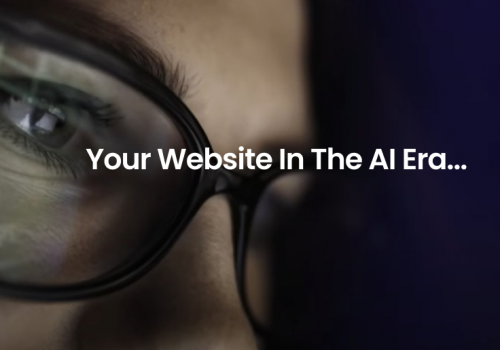Omnichannel Communications. Omnichannel approaches to both communication and sales are fast becoming the new standard for organizations across the world. In many ways, this shift represents a natural progression to a more unified and seamless way of operating. First, we had siloed communication systems with relatively little choice – Customers could call, or…. call.
Then we moved to multi-channel, where customers had more communication options, but these options were still siloed. The experience was inconsistent across different communication channels and customers would quickly learn which channel was the “best”. This was sometimes by design and sometimes just an unfortunate consequence of a multichannel system. We often don’t like to think of companies engaging in nefarious manipulation tactics, but it does happen.
When multichannel first came onto the scene, some companies advertised themselves as multichannel when in a practical sense, they weren’t. Sure, you could use email or live chat, but good luck getting through to someone or getting a timely response. When customers tried to engage with these channels they would be hit with a suggestion like “Our live chat agents are busy, try calling instead”. It’s similar to how popcorn is priced at most cinemas. It’s often only a little bit more money to get an insanely large portion of popcorn than get a small. Why? Because they never wanted you to buy the small one. They just want you to compare the price of the small with the large one and determine that you’ll get much better value for money if you get the large one.
Of course, not all companies used this marketing tactic, in fact, most didn’t. However, you often can’t tell the difference between intentional communication channel directing and unintentional. This is because multi-channel approaches have one key downfall, they are siloed. It’s hard to provide a consistent experience to customers when the agents and teams they speak to don’t speak to other teams. The same goes for when they don’t share the same technology or systems. Information becomes locked on certain systems and not in others. Customer account information is separated across lots of different applications and providing top tier customer experiences is almost impossible.
This is why we are seeing an omnichannel revolution. Omnichannel platforms take what’s good about a multi-channel approach (several communication channels) and marry it with AI, automation, and seamless integration. Everything takes place in one application. No data becomes siloed because it is all either generated in that place or pulled through from other applications in real-time. Agents don’t need to be trained on lots of different systems. It’s just better for everyone – the business and customers.
We often talk about omnichannel in relation to traditional for-profit businesses, but it’s for every industry, and this is why we’re seeing increased adoption of omnichannel communication platforms in Education.

Why is There a Growing Demand for Omnichannel Communications in Education?
The simple answer is that the benefits of omnichannel communication reach every industry, and education is no exception. We’ll get more into the specifics of the benefits in the next section.
However, looking at the education industry more closely, it’s easy to see why this shift is happening now. Traditionally, education has been done in brick and mortar locations and has had a keen focus on exclusivity. It’s only in the last decade that doing a degree solely online has become possible with institutions like Open University. However, exclusivity was still a pressing issue. There was, and still is in some places, a stigma associated with online degrees or education.
When someone says they went to university, you picture them going to a dedicated building or campus that is exclusively available for those who met the requirements to enter the building. For most of human history, education has taken place in private spaces. The higher up the education ladder you go, the more exclusive it becomes. You can’t wander into a university if you haven’t been granted permission based on your grades before university, and in most places in the world, you will have to pay to get in.
However, there have been two shifts happening in the education industry in the last few decades. The first is that education is for everyone. The top universities like Harvard, Stanford, MIT, and others, now post their lectures online available for anyone to watch. The same is true for the course material. This means that anyone in the world with an internet connection can now get a Harvard degree education from their bedroom. Instead of the education being exclusive, it’s now only the qualification that is exclusive. You can learn all the same material that someone sitting in a Harvard lecture hall will, but only the person in the hall will walk out with a Harvard degree.
Secondly, education is increasingly happening online. This point is related to the first because once the international community decided that education was a human right, going online was the logical next step. How do you bring education to everyone no matter where they are? By putting it on the internet. Once this shift happened it opened the conversation for internet-only education and away from brick and mortar as the only option.
We’ve focused a lot on the university aspect of education here but really it stems into all aspects of education. Online learning can help bridge the gap for students who miss classes, need extra help, or want further learning. Homework is done online more today than on paper. And with the global coronavirus pandemic, many schools were forced online whether they were ready or not. The reason universities are such an important part of this equation is that they are often considered the most prestigious or serious form of education. When change happens to the serious link in the chain, it will happen for all the other links too.
Moving education online offers many benefits:
- Reduced costs – There are fewer overheads when the education company doesn’t need to pay to maintain buildings or buy dedicated equipment. It’s also cheaper for students because they don’t need to pay to commute.
- Flexibility – Students can learn when they want and when they feel most productive. Lecturers can record material in their own time. Sometimes it also means that content can be recorded, and the teacher doesn’t need to repeat the same topics to multiple classes.
- Accessibility – The courses can reach more students, regardless of location. This is great for students who don’t live near the institution they want to attend and also great for students who have disabilities that would make attending a physical location harder. It’s also great for the education center because they take on more students and make more money, even when the course is offered at a reduced rate.
The flip side of this is that excellent communication is paramount to online learning. This is where omnichannel communication channels really shine.

The Benefits of Omnichannel Communication in Education
Channels for Every Type of Learner
We are a diverse species and we all have our preferences when it comes to communication. Sure, we all have to use every type of communication at some point, but it’s not always the most effective approach to us. When engaging with a company, having to use a communication channel you dislike can be annoying and might cause you to move to a competitor. But in education? It could mean that you don’t learn, and this is a major problem. Some students learn better when they can write a detailed email to their teacher and get a point by point response addressing all of their questions. Other students might prefer a one-on-one chat over video conference.
All communication channels should be available to students, but the education centers must know when to utilize them. When is a chatbot most appropriate? For addressing common questions about the course structure, resources, timetables, exam dates, and so on. Chatbots are perfect for unchanging information or information that isn’t open to interpretation. Could you design a chatbot to help with complex math theory? Or what about a chatbot that could debate Seneca’s philosophical musings on stoicism? on Yes, probably, but getting the basics right is more important. The worst thing you can do is not implement a chatbot just because you want it to be the best chatbot in the world and nothing else will do.
Live chat can be extremely useful if you have a dedicated customer service team or team of support staff. Live chat can also work great for teacher/student communication where the teacher sets aside time to be available to chat.
Similarly, students should have a way of calling the teacher. Of course, it’s important to manage expectations here. It’s unreasonable for a teacher to have to be available for calls 24/7 but being available regularly is important.
Data, Data, Data
Omnichannel communication platforms allow data to be collected, stored, and crunched. With AI and a wealth of data, the education center can plan for the future. If there are frequent questions about the same element of a topic, then it might be time to focus more attention on this area or to create dedicated online resources for students to consume. Students will find this material themselves, and if they do contact the organization, they can first be directed to the material. This saves time for both the student and the staff at the education center.
Having all your data in one place also helps reduce the chance of erroneous data records or missing information. In education, it’s crucial that the student’s entire experience is captured, because this can impact their future. There’s no room for error with education records.
Higher Enrollment Rates
Utilizing communication channels like social media in the right way can lead to higher enrollment rates. Enrollment is all about reaching the right people and communicating your message effectively. Social media is perfect for this task.
With the data you collect on your omnichannel platform, you can determine who your ideal student is and use social media to engage these students. You can run ads on Facebook that will target particular age groups, interests, or demographics to drive higher quality leads.
Forward Thinking and Innovative Reputation
Students want to learn at places that can change the future because that’s what they are trying to do themselves. Engaging with the latest tech can help set yourself apart as a forward-thinking and innovative company. A simple way to do this is to invest in an omnichannel communication platform that supports voice, video, SMS, email, WhatsApp, Facebook, Telegram, live chat, chatbots, and more. Students are typically younger and will likely already been engaged with these platforms so it’s a perfect way to connect with them in the ways they like to connect with the world.




















